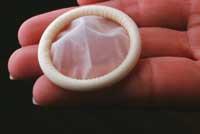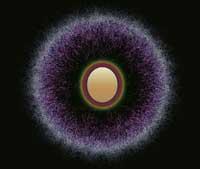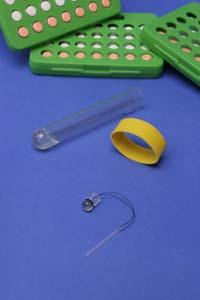Ultrasounds, contraceptive for men?
2010/06/13 Aulestiarte Lete, Izaro - Elhuyar Zientziaren Komunikazioa

It seems that, in general, in sports medicine and in physiotherapy centers it is intended to reorient the instruments of ultrasound of therapeutic use to another medical field. A group of researchers from North Carolina have presented them as a method to avoid fertilization and other experts consider that opportunity can be viable.
In fact, they have emphasized that the market offers many types of contraceptives for women and little for men, so today a warm welcome could be given to this proposal, since it would represent a significant step on the road towards the equalization of inequality. Aware of its future potential, recently a prestigious American organization has awarded a grant to the project.
The new technique has not yet been developed and only the first tests with laboratory rats have been performed. In any case, the results obtained so far are satisfactory for the researchers, who have managed to exhaust the sperm of these animals by ultrasound. To achieve this, two doses applied over a 48 hour interval were needed and rats lost fertility for at least six weeks.
Researchers continue to test and adjust the technique to make the method as effective and safe as possible. According to them, achieving this goal would allow men to achieve a “totally reliable” contraceptive for six months with a single treatment or ten minute session by ultrasound.

In short, the technique proposed by American researchers is based on the use of ultra-fast sound waves. Ultrasounds produce heat and by increasing the temperature of the testicles it seems that the cells that produce sperm do not fulfill their function. In images of the testicles of experimentally treated rats, seminiferous tubules (which secretes or conducts semen) appear without sperm. “And when the testicle does not generate more sperm and sperm reserves are exhausted, it is impossible to remain fruitful,” the researchers of North Carolina stressed.
Step by step Step
Those responsible for the project would like to conduct working sessions with laboratory rats next year with men. However, the long-term effects of the method are still unclear, and the process may be extended for at least a few years, as long as approval is given.

In addition to the effectiveness, they must first check whether the method is safe. According to the conclusions obtained so far, they could achieve the temporary suspension of sperm production, without any further damage, since after six months it would recover the male proliferation capacity and the quality of the sperm would not be affected. But there is still much to be clarified. Among other things, they do not know with precision the number of ultrasound tests that should be applied so that men do not develop the definitive impotence.
In addition to drawing attention, researchers affirm that the method is cheap and simple. But they will have to continue working. On the other hand, although they achieve the goal, it is to be seen if men will use it.
Published in 7K.

Gai honi buruzko eduki gehiago
Elhuyarrek garatutako teknologia






